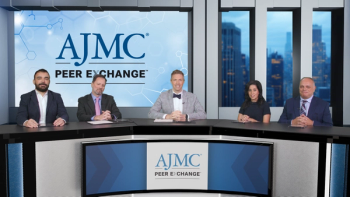
Panelists discuss how real-world outcomes inform patient conversations and support shared decision-making for third-line metastatic colorectal cancer therapies.

Panelists discuss how real-world outcomes inform patient conversations and support shared decision-making for third-line metastatic colorectal cancer therapies.

Panelists discuss how RWE helps guide sequencing choices when head-to-head trial data are lacking in third-line metastatic colorectal cancer.
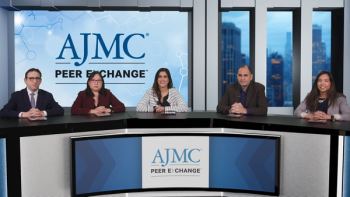
Panelists discuss how the treatment landscape has evolved from limited options to include hypomethylating agents and venetoclax combinations, with emerging oral formulations promising greater accessibility while requiring careful consideration of patient selection and toxicity management.
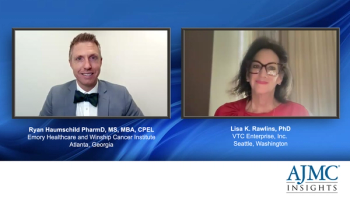
Panelists discuss how prescription digital therapeutics differ from traditional pharmaceuticals by following FDA medical device approval pathways focused on clinical performance and safety rather than chemistry and manufacturing while offering potential economic value by extending behavioral health capacity to underserved populations, especially in rural areas with limited mental health professionals.

Panelists discuss how combination trials like VIALE-A and VIALE-C have demonstrated venetoclax’s survival benefits when added to hypomethylating agents, opening doors for numerous combination studies while emphasizing the need for randomized trials to prove clinical benefit in different disease contexts.

Panelists discuss how schizophrenia imposes significant economic costs across direct medical expenses, nonmedical expenses, and indirect costs, with negative symptoms particularly amplifying the burden by reducing patient engagement, work capacity, and treatment adherence while increasing relapse risk and total cost of care.
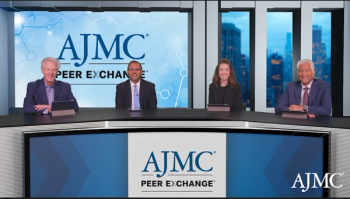
Panelists discuss how SGLT2 inhibitors evolved from diabetes medications to become foundational heart failure therapy with class I recommendations across the ejection fraction spectrum, providing cardiovascular and renal benefits through unclear but likely multiple mechanisms, with the elegant advantage of single-dose efficacy regardless of diabetes status or heart failure type.

Panelists discuss how ARNIs like sacubitril-valsartan provide superior outcomes compared with ACE inhibitors in HFrEF (20% reduction in cardiovascular events, 16% mortality reduction), with broad FDA approval across the ejection fraction spectrum and recent generic availability improving cost-effectiveness, though ACE inhibitors and ARBs remain viable second-line options when ARNI is not accessible.
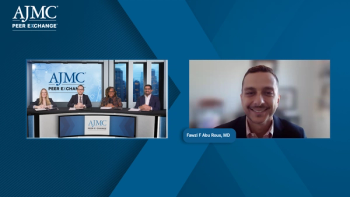
Panelists discuss how overcoming resistance to EGFR TKIs requires next-generation inhibitors and more individualized treatment strategies.

Panelists discuss how EGFR mutation profiling guides targeted first-line NSCLC therapy and shifts care toward precision medicine.

Panelists discuss how efficacy, safety, quality of life, and patient-specific factors drive selection among third-line therapies in metastatic colorectal cancer.

Panelists discuss how data from FRESCO-2 and other trials position fruquintinib as a strong third-line option compared with regorafenib and FTD/TPI.

Panelists discuss how venetoclax has revolutionized AML treatment by providing effective therapy options for older patients with previously untreatable disease, enabling higher response rates, longer survival, and increased transplant eligibility while transforming the treatment landscape across all age groups.
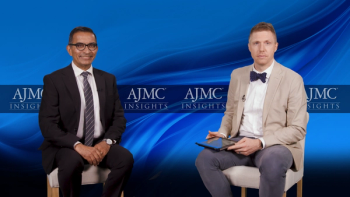
Panelists discuss how prescription digital therapeutics will ideally be used in combination with traditional medications to provide optimal outcomes, particularly for patients hesitant about medication or those in early stages of illness where diagnostic certainty may be evolving.

Panelists discuss how transplant eligibility has expanded beyond traditional intensive chemotherapy candidates to include patients receiving lower intensity regimens, with earlier transplant consultations and consideration of organ function preservation through less toxic induction approaches.

Panelists discuss how diuretics serve as necessary “bailout therapy” for volume management in heart failure but should not substitute for guideline-directed medical therapy, with emerging evidence supporting more nuanced approaches to diuresis, including urinalysis monitoring and novel formulations like intranasal furosemide, while noting that effective heart failure therapies actually reduce diuretic requirements.

Panelists discuss how β-blockers remain foundational therapy for heart failure with reduced ejection fraction (using evidence-based agents like carvedilol, metoprolol succinate, or bisoprolol) with proven mortality benefits, while their role in heart failure with preserved ejection fraction is more questionable and potentially overused unless atrial fibrillation is present.
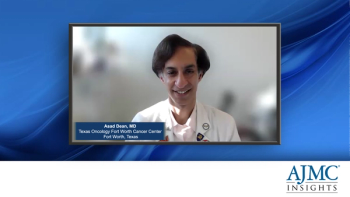
An expert discusses how rilzabrutinib uniquely improves quality-of-life metrics, including fatigue and women’s health domains, which previous immune thrombocytopenia (ITP) therapies failed to address despite raising platelet counts. An expert discusses how rilzabrutinib’s oral administration and broad tolerability make it a practical treatment option while emphasizing the need for long-term efficacy and safety data to strengthen clinical confidence.

An expert discusses how rilzabrutinib uniquely improves quality-of-life metrics, including fatigue and women’s health domains, which previous immune thrombocytopenia (ITP) therapies failed to address despite raising platelet counts.

Panelists discuss how the SUNLIGHT trial and real-world evidence support FTD/TPI with or without bevacizumab as an effective third-line option in metastatic colorectal cancer.

Panelists discuss how available third-line therapies, such as FTD/TPI, regorafenib, and others, are chosen based on survival data, safety, and patient quality of life.

Panelists discuss how current NCCN guidelines emphasize the importance of treating AML at experienced centers with proper infrastructure, while treatment decisions are based on intensive vs nonintensive therapy eligibility and specific genetic mutations like FLT3, IDH1, and TP53.

Panelists discuss how social determinants of health significantly impact AML care, particularly regarding transportation access, health literacy, and the intensive nature of treatment requiring frequent clinic visits for blood work and transfusions, which disproportionately affects patients living far from treatment centers.

Panelists discuss how the CONVOKE clinical trial was designed as a 16-week study focusing specifically on patients with negative symptoms, incorporating patient input in app development and showing improvements in negative symptoms, depression, and cognitive function even in chronically ill patients.

Panelists discuss how prescription digital therapeutics are currently used in clinical practice, noting that while none are yet approved for schizophrenia, CT-155 shows promise in phase 3 trials, and existing PDTs like Rejoyn for depression demonstrate the potential for technology-based interventions.

Panelists discuss how guideline-directed medical therapy has evolved to include 4-pillar treatment for heart failure with reduced ejection fraction (angiotensin-converting enzyme inhibitors/angiotensin receptor‐neprilysin inhibitors, β-blockers, mineralocorticoid receptor antagonists, SGLT2 inhibitors) that can reduce mortality by up to 60% and extend life by 6 years, though significant implementation gaps remain, with only about one-third of eligible patients receiving appropriate therapy, necessitating rapid initiation of all 4 drug classes within weeks rather than sequential titration.

Panelists discuss how effective heart failure management requires collaborative care across multiple specialties (primary care, cardiology, endocrinology, nephrology) with advanced practice providers serving as dedicated coordinators, utilizing multidisciplinary teams and algorithm-driven care protocols to optimize patient outcomes and prevent the hot potato approach to complex comorbidities.

An expert discusses how rilzabrutinib’s covalent reversible binding mechanism provides a favorable safety profile with only manageable grade 1 to 2 toxicities and no cardiovascular or bleeding complications, unlike earlier irreversible Bruton tyrosine kinase (BTK) inhibitors.

An expert discusses how the phase 3 LUNA 3 trial demonstrated that rilzabrutinib achieved durable platelet responses in 23% of patients while also being the first prospective trial to show significant improvements across all quality-of-life metrics.

Panelists discuss how prescription digital therapeutics can serve the psychological and social components of schizophrenia treatment while potentially improving medication adherence, similar to how digital monitoring tools enhance outcomes in other chronic conditions like diabetes and hypertension.

259 Prospect Plains Rd, Bldg H
Cranbury, NJ 08512
© 2025 MJH Life Sciences®
All rights reserved.
